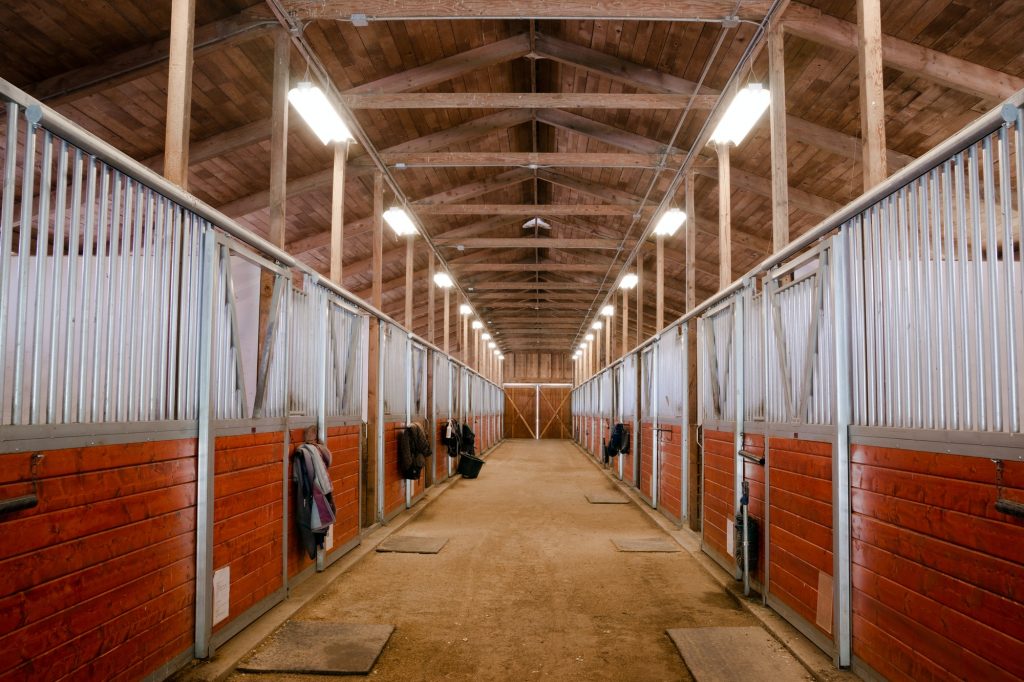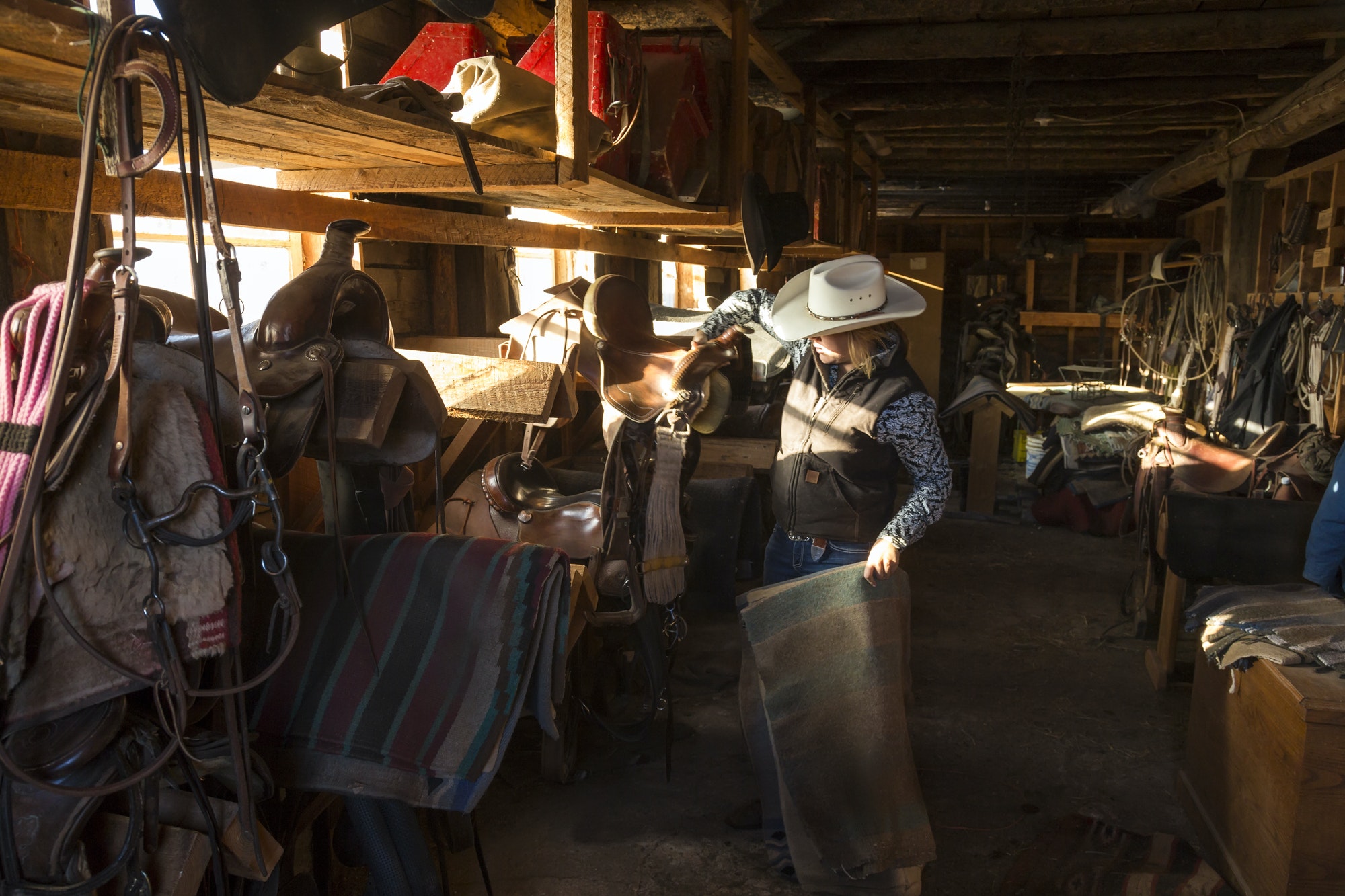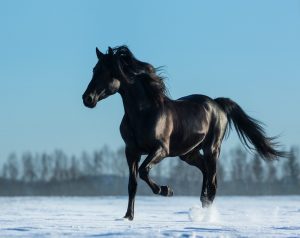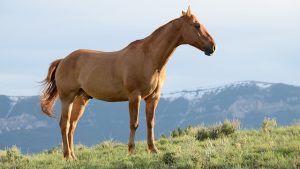Do you want to keep your horse warm during windy and cold seasons without making him sweat? Then getting a horse blanket for your horse is a smart option. But what is a horse blanket, and how can your horse benefit from using it?
In this article, we will discuss the purpose and types of horse blankets. Since purchasing a horse blanket requires a bit of an investment, we’ll also share helpful tips on choosing the right coverings for your horse and a set of cleaning and storing measures to make it last longer. But first, let us consider the usage and types of blankets and sheets for horses.
Horse Blankets and Sheets and Their Types
A horse blanket is designed to keep your horse warm and protected from wind, snow, and other elements, thanks to the filling or stuffing underneath it. On the other hand, a sheet has no fill and is lightweight, so it does not provide warmth as blankets do. But they both have two varieties which are turnout and stable.
Turnout sheets and blanket are impermeable to water, so they’re perfect for outdoors while stable sheets and blanket are not waterproof, so they are just for indoors.
The amount of warm a blanket can be measured through grams of fill or “stuffing.” Here’s a rough breakdown that can guide you in finding the right cover for your horse:
- 0-100 grams of fill – Sheets, also called Lightweight blankets
- 150-250 grams of fill – Medium weight blankets
- 300+ grams of fill- Heavyweight blankets
Sounds confusing? Here’s a rundown of all the types of sheets and blanket to help you recognize each one of them and decide on what to buy among many options.

Stable Blanket
This blanket keeps your horse warm during cold seasons while they are in a stall. It is not waterproof, but it can provide additional insulation underneath turnout sheets.
Turnout Blanket
This waterproof blanket comes with a fill in the inner layer that provides warmth that may come with a hood.
Stable Sheet
This lightweight sheet is not waterproof, but it has a snug-fitting layer designed to make your horse comfy and clean while staying in the stall. You can also put it underneath turnout sheets to add a layer of insulation.
Turnout Sheet
It’s a lightweight waterproof sheet that offers your horse protection against environmental elements such as wind, snow, and hail while out in the pasture.
Anti-Sweat Sheet
Its primary purpose is to keep your horse clean while cooling off after a hard work out or a bath, but it can also add a layer of warmth if placed underneath turnout or stable blankets.
Quarter Sheet
This sheet is perfect when warming up during chilly mornings since it can cover the hindquarters of your horse.
Fly Sheet
It is used during summertime to protect your horse from the bites of insects and add a layer of warmth by putting it underneath other sheets.
Rain Sheet
It is a waterproof sheet that protects the horse from rain, and it perfectly fits the riding back.
Cooler
If your horse is sweating after a hard workout in winter or thoroughly wet after a bath, this cooler can help your horse dry faster like an anti-sweat sheet while keeping them from getting cold.
Parts of a Blanket
Horse blankets are composed of three layers: the lining, fill, and shell. The lining made from either cotton, polycotton, nylon, or mesh helps to reduce friction while the fill or stuffing inside provides warmth. And the outermost layer is the shell that protects your horse from other elements like rain or water (if it is waterproof). These are the other vital components of a horse blanket:
1. Surcingle – This is a belly strap responsible for securing the sheet or blanket in place.
2. Shoulder Gussets – It’s a piece of fabric sewn in at the shoulder to help the horse move freely.
3. Tail Flap/ Cover – It’s an added swatch of cloth that covers the tail down to the tailbone to seal cold winds.
4. Leg straps – are straps designed to crisscross between the back legs of the horse to keep the blankets stable.
5. Hoods and neck cover – These are separate pieces attached to the turnout or stable blanket for an added coverage of warmth and protection.
6. Front closures – There are different types of front closure, and here are the most common ones:
Buckle front – It’s a regular metal belt buckle with nylon straps that offers adjustability.
Surcingle – This interlocking metal piece in front closures, also known as “T-lock,” keeps the blanket closed.
Quick-flip – It’s a handy metal snap or clip fastener that’s easy to open and close even with gloves on.
V-front – This closure type has a cut a little higher on the neck, and it fastens below the chest to eliminate pressure when the horse’s head inclines down.
Closed front – As its name suggests, this type has no opening in the chest, which means they are taken on and off through the head, but they are comfy and streamlined fit, so there are no more bunching and rubs for your horse.
7. Tail Cord – It ties the rear ends of the blanket together to keep it in place and rests under the tail.
So Should you Blanket Your Horse? Or Not?
According to many veterinarians, the majority of healthy and non-clipped horses with shelter access can manage without blanketing since their coat can provide warmth. But, when temperatures fluctuate, you might get worried about your horse and might reconsider blanketing. Well, to help you decide, try considering the following factors:
1. Hair coat
Shorter daylight time prompts horses to longer and coarser winter hair coats that trap warm air and insulate the horse’s body during cold seasons. However, this can vary in every horse.
- Horses with a full winter coat do not require blankets.
- Clipped horses with ‘show coats’ need a blanket to stay warm.
2. Living situation
When extreme weather condition comes, access to a shelter can help the horses cope.
- Horses who live in a stall shall do fine without blankets.
- Horses who are exposed to harsh weather needs a waterproof sheet or blanket.
3. Age
As horses went through the process of aging, their body systems become weaker, and their ability to maintain their core temperature or thermoregulate declines. So, blanketing is a smart choice to retain body heat, but the correct fill and weight of the blanket must be taken into consideration to avoid overheating and sweating.
4. Body Condition
The stored fats of horses affect their ability to regulate their temperature.
- Easy keepers or horses with plenty of fat can survive without a blanket.
- As for thin horses or hard keepers, they need to burn more calories to keep themselves warm, so blanketing is essential for them.
5. LCT and Geography
The Lowest Critical Temperature (LCT) of a horse is the point at which he can maintain the core temperature in his body. Once his temperature drops below his LCT, his hair coat insulation and regular calorie intake won’t be enough to keep him warm.
The temperature a horse is accustomed to can also influence his LCT. That’s why horse from warmer climates often wears blanket at milder temperatures than a horse in colder areas.
So those are the five key factors you should consider when planning to purchase a blanket. Even though most horses with a healthy body and active lifestyle can live well without a covering, it would be best to have one, so you can be prepared when a storm comes.

Blanketing Chart
Now, if you decided to get a blanket for your equine pet, you may want to know which weight type is the best for specific temperatures. Here’s a guide in choosing the right one for your horse.
Note that the list chart does not consider the wind chill or precipitation and other factors mentioned, so you need to use your judgment in that case.
Average temperature (°F): 60°
Unclipped horses: Nothing
Clipped horses: Nothing or lite turnout (no fill) if rainy &/or windy
50°
Unclipped horses: Nothing
Clipped horses: Lite turnout
40°
Unclipped horses: Lite turnout
Clipped horses: Medium turnout w/ standard or high neck
30°
Unclipped horses: Lite to medium turnout
Clipped horses: Medium turnout w/ high neck or neck cover
20°
Unclipped horses: Medium turnout
Clipped horses: Medium turnout w/ neck cover
10°
Unclipped horses: Medium turnout w/ standard or high neck
Clipped horses: Heavy turnout w/ neck cover
0°
Unclipped horses: Medium or heavy turnout w/ neck cover
Clipped horses: Heavy turnout w/ neck cover or double blanket
Below 0°
Unclipped horses: Heavy turnout w/ neck cover
Clipped horses: Double blanket w/ neck cover
How to Measure Horse Blanket
If you decide to purchase a horse blanket, you should be able to get the correct measurements to make sure it’ll fit your horse well. Here’s you can obtain the right blanket size for your horse.
1. First, make sure your horse is standing square so that you can obtain an accurate measurement.
2. Then, measure the distance from Point A, which is the point where the horse’s chest and neck meet to Point B, the edge of the tail, or the buttocks. Include the broadest part of the shoulder and don’t include the center of the tail to avoid incorrect measurements.
3. And lastly, record the distance in inches because that is the size of your horse’s blanket.
If you can’t find the exact horse blanket size and end up between blanket sizes, it would be better if you’d round down because buying too large blankets that do not fit can cause it to shift during turnout. It can also lead to rips and injuries if your horse would get caught up.
If you have now decided to get a blanket for your horse, then you should know how to use it correctly. Consider the following tips when fitting the new covering for your horse.
Proper Fitting Tips
1. Adjust the blanket properly and make sure it rests in front of the withers. If the sheet or covering is positioned far from the withers, it will cause high pressure in the area, leading to soreness. To make sure the blanket fits perfectly, try to insert your hand and look for regions pressured by running your hand from the buckles in the blanket’s chest to the horse’s wither.
2. Fasten the leg straps correctly by looping one strap through the other. Ensure that the surcingle and leg straps are not too tight or too loose. Tight straps can likely cause rubbing and discomfort, while loose straps may trip your horse and alter the blanket’s position.
3. For loosened straps, try covering the adjustment buckles with duct tape to prevent it from sliding. It also helps to protect the legs of the horse from the cold metal.
Cleaning and Storing Tips for Horse Blankets
Your horse blankets need cleaning, ideally after each season. You have two options for cleaning. You can wash them yourself or use a laundry service. If you choose to do it yourself, check the manufacturer’s washing instructions. Here are the DO’s when cleaning horse blankets.
1. Prewash the blanket using a stiff brush to remove any excess dirt and hair.
2. Then, remove all the detergent build-up from your detergent dispenser.
3. Put the blanket along with straps and buckles in a mesh bag to protect it from any potential damage.
4. Add a blanket-cleaning wash and machine wash it in cold water(max. 85°F) in a gentle cycle.
And here are the things you should take note of when washing horse blankets.
1. Do not use a washing machine with an agitator, detergents, or fabric conditioners because it can damage the waterproof and breathable coating.
2. Consider re-waterproofing your blanket if the water no longer beads off the surface of the turnout. It’ll help to repel water and restore breathability.
3. Lastly, dry it by hanging it on a shade to prevent the color from fading.
Aside from cleaning, you also need to store the blanket properly to make it last. You can put it on a blanket rack and hung in the wall, bar, or bag or a sealed container. When the blanket season ends, need to wash and re-waterproof it if necessary. If you can’t do it yourself, you may turn to professionals who offer horse blanket washing service. That way, you can secure your investment because your horse’s blankets and sheets can last longer.





